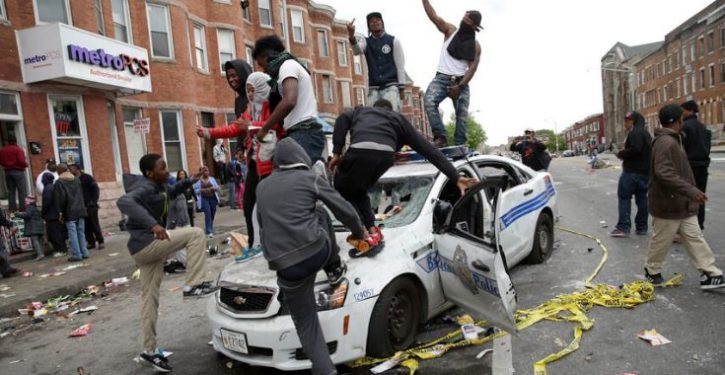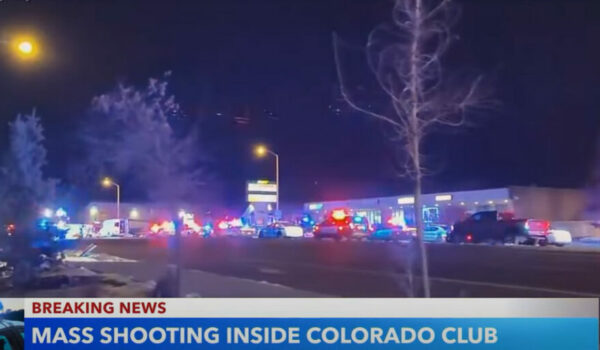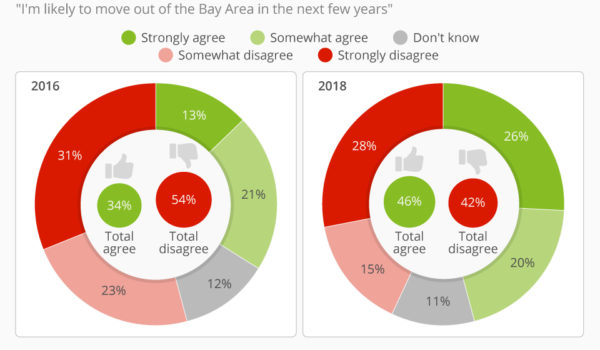
Washington, DC has had plenty of “criminal justice reform” — soft-on-crime laws that embolden criminals to commit more crimes. For example, in 2021, DC passed a “second-look” law that made 583 violent criminals (including many murderers and rapists) eligible for an earlier release.
But despite rising crime, it continues to pass such laws, resulting in more crimes being committed. Indeed, a criminal-justice reform activist was just killed by a criminal on the very day a new “criminal justice reform” was passed by the Washington, DC Council.
At Hot Air, Jazz Shaw notes:
Last week in Washington, D.C, the City Council passed a sweeping overhaul to the city’s criminal codes. Touted as yet another example of “justice reform,” the changes reduced or removed bail for most crimes, and lowered or eliminated minimum sentences for many crimes while also lowering some maximum sentences. As we’ve seen in so many other cities, the overarching goal of the legislation was to further empty the jails and put criminals back out on the streets more quickly.
There was a tragic bit of irony taking place even as the measure came up for a final vote, however. One of the people who had been actively lobbying and promoting the “justice reform” measure was Kelvin Blowe, a 32-year-old activist with DC Justice Lab. On the night of the City Council meeting, Blowe was driving some colleagues home from his job as a security guard when he was caught up in an automobile accident. He exited his vehicle for reasons unknown and was promptly shot dead by someone on the street. Police say that no arrests have been made and the case remains under investigation.
The local Fox TV station reports:
A man who helped pass D.C.’s historic criminal code overhaul was shot and killed hours before council passed the bill last week.
Kelvin Blowe, 32, worked with DC Justice Lab, a group that advocates for criminal justice reform in the city.
Family said he also did security work, and early Tuesday morning, Blowe had just finished a late night security guard job and was driving some co-workers home.
He was on Southern Ave. near Suitland Parkway in SE when police say there was a crash after a driver crossed the line to try to pass Blowe’s car.
The just-passed criminal justice “reform” would cut penalties for carjacking, gun possession by felons, and burglary — and to make it easier for criminals who have spent more than 20 years in prison for major crimes like murder to get their sentences reduced.
It would do so even as carjackings have skyrocketed in Washington, DC, and murders have steadily increased. Washington, D.C., reported 426 carjackings in 2021, up from 142 in 2019. This March, a Washington doctor was run over and killed by a carjacker who drove off in his car. Last year, two teenage girls aged 13 and 15 carjacked and killed an Uber Eats Driver in Washington, DC, a crime for which they received only juvenile detention, not prison.
But the DC Government doesn’t seem concerned. As the Washington Examiner’s Byron York reported, the “Washington DC council voted unanimously to ‘lower sentences for burglaries, carjackings, and robberies….reduce penalties for illegal gun possession, including for carrying a pistol without license and for being a felon in possession of a firearm.’”
The Washington Free Beacon reported:
The Washington, D.C., city council on Tuesday voted to dramatically reform the city’s criminal code, reducing penalties for offenses including illegal gun possession and carjacking, even as D.C. has seen a spike in homicides in recent years.
The legislation, which requires the approval of Mayor Muriel Bowser (D.), would eliminate mandatory minimum sentences for most crimes, the Washington Post reported, and lower the maximum sentences for crimes such as carjacking and robbery.
…Tuesday’s vote marks the second time this month that the council approved the legislation, which is required for bills in D.C. to advance. This week’s deliberation over the bill was contentious, as some council members challenged the bill’s provisions that would lower the maximum penalty for carrying a pistol without a license and possession of a gun as a felon to two years in prison.
Carjackings rose rapidly in Washington, DC in 2021, and then rose another 27% in the first eight months of 2022. Homicides increased to 226 killings in 2021 from 166 killings in 2019, and only 88 homicides in 2012. Washington DC reached the “100th homicide mark faster” this year “than any year since 2003,” according to police cited by the local CBS station. In 2022, the 100th homicide occurred on June 24. In 2021, when murders increased by 14%, the 100th homicide did not occur until July 10. Robberies continue to increase.
If DC goes through with reduced sentences for criminals — which it will, unless Congress stops this criminal-justice reform bill from becoming law — that will likely increase the crime rate and the homicide rate. Freeing dangerous people who are currently incarcerated increases the violent crime rate. Baltimore illustrates this. Its homicide rate has risen since 2014. Over 200 people have been killed in Baltimore in just the first seven months of this year, about as many as died in all of the year 2014, even though Baltimore’s population has shrunk a lot since 2014. Murders have risen there because prosecutors haven’t been seeking long sentences for people who commit serious crimes. As a result, criminals are soon back on the street, where many of them go on to murder innocent people. Most murders in Baltimore are committed by people who previously were convicted of a serious crime, but didn’t serve a lengthy sentence for that crime, notes the City Journal:
Maryland Public Policy Institute researcher Sean Kennedy, who studied 110 homicide cases arising from January 2019 to July 2020, found that suspects in 77 of these had been previously convicted of a serious crime by Mosby’s office. Sixty-one of them (79 percent) faced statutory jail terms that should have kept them in prison beyond the date on which they allegedly committed the homicide.
Studies indicate that longer periods of incarceration deter many crimes from being committed by people who are not currently incarcerated; they don’t merely prevent people who are already inmates from committing more crimes — although they do that, too. For example, a study found that longer sentences deterred people from committing murder, robbery, and rape. (See Daniel Kessler & Steven J. Levitt, Using Sentence Enhancements to Distinguish Between Deterrence and Incapacitation, National Bureau of Economic Research Working Paper #6484 (1998)).
A 2008 Santa Clara University study found that longer sentences for three-time offenders led to “significantly faster rates of decline in robbery, burglary, larceny, and motor vehicle theft,” even after controlling for pre-existing crime trends and economic, demographic, and policy factors.
Shorter sentences also make inmates more likely to reoffend and commit more crimes. As Michael Rushford noted in the Washington Post, “an exhaustive, decade-long study released in June by the U.S. Sentencing Commission, tracking more than 32,000 federal offenders released from prison in 2010, found that offenders released after serving more than 10 years were 29 percent less likely to be arrested for a new crime than those who served shorter sentences. Offenders who served more than five years were 18 percent less likely to be arrested for new crimes compared to a matched group serving shorter sentences.”
Maryland and Virginia are alike in many ways. But Maryland has shorter sentences for criminals than Virginia. It also has a violent crime rate more than double Virginia’s. In 2018, Maryland had a violent crime rate of 468.7 per 100,000 people, according to USA Today, compared to a violent crime rate of only 200 per 100,000 in Virginia.
It is sometimes argued that sentences should be reduced because inmates age out of crime. But criminals released from prison are usually arrested again, especially when they are released at a young age. That is illustrated by a report issued in February by the U.S. Sentencing Commission. It found that over an eight-year period, violent offenders returned to crime at a rate of 63.8 percent. The median time to rearrest was 16 months. Most violent offenders released from prison committed more crimes. Even among those offenders over age 60, 25.1 percent of violent offenders were rearrested.



